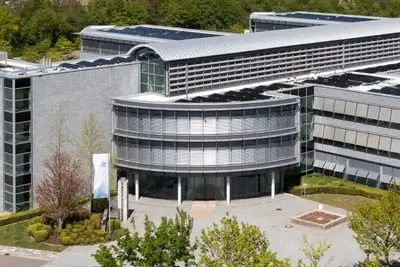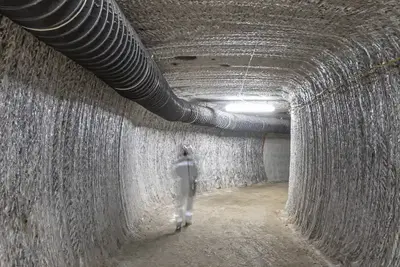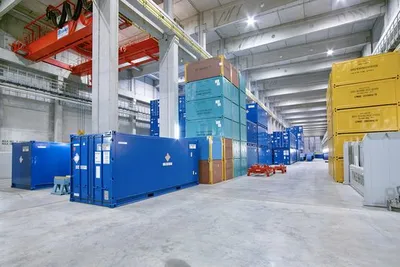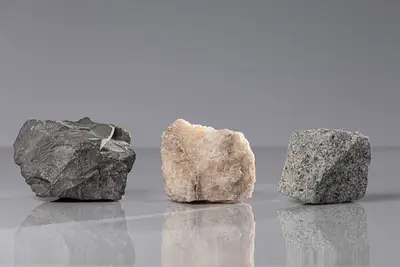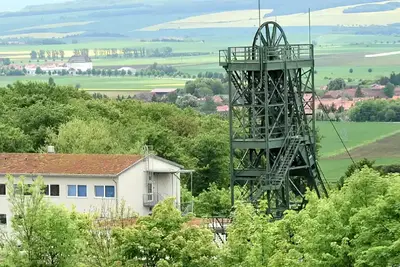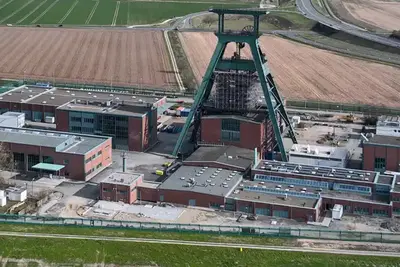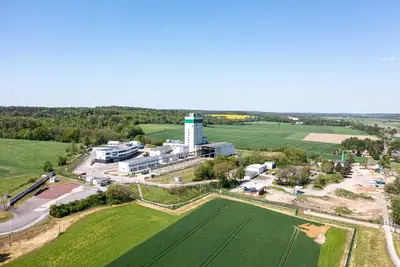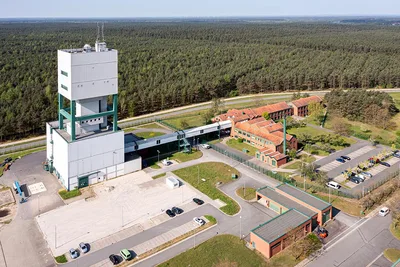Scope
The 3D seismic survey was a very extensive project. Here, we take a look at its dimensions.
Survey area
The first test measurements were carried out in 2013 in order to clarify whether a 3D seismic survey could be used to model the structure of the Asse mountain range and the overburden. These measurements showed that seismic mapping of the subsurface could be carried out with sufficient accuracy. They also provided basic information relating to the measurement set-up for the 3D seismic survey. The measurement area extended over some 37.5 square kilometres, running from the south-west to the north-east. It included the localities of Wittmar, Remlingen, Groß Vahlberg, Mönchevahlberg, Weferlingen and Klein Biewende, as well as parts of Dettum and Sottmar. In addition to built-up areas, the survey area also included large areas of farmland and woodland. In terms of depth, the plan was to record the geological structures of the Asse at depths of 200 to 2,000 metres.
As a long-term consequence of World War II, it was impossible to rule out that unexploded ordnance would be encountered in the survey area. Given the dense seismic measurement grid, this ordnance could have posed a risk to personnel. Following preliminary investigations, the BGE reached the assumption that unexploded bombs or discarded ordnance were to be expected in some six percent of the survey area. More-detailed analyses of this situation were carried out over the course of the 3D seismic survey.
Measurement grid
The measurement grid consisted of two main components: lines of source points (“source lines”) and lines of receiver points (“receiver lines”). At the source points, seismic waves were emitted into the subsurface using vibration vehicles or small detonations. After being reflected by the various rock layers, these waves were recorded and stored at receiver points on the surface by instruments known as geophones.
The 3D seismic survey was carried out using an orthogonal measurement system, i.e. the source lines and receiver lines were at right angles to one another. The line interval of the measurement grid was small in the vicinity of the Asse II mine and increased in size at the edge of the survey area.
Per square kilometre, there were up to 2,000 source points from which seismic waves were emitted into the subsurface. Of the envisaged total of 40,860, it was possible to implement 36,137 source points (88.4%). The receiver points, which detected the seismic waves reflected by the rock, were even more numerous. Of the planned total of around 46,130, it was possible to implement 44,677 measuring points (96.9%). The exact locations of the points were determined using GPS signals.
This large number of measuring points was necessitated by the geology of the Asse mountain range – specifically the steep sides of its salt structure and the similarly steeply inclined layers of the overburden. The steep incline of the individual layer boundaries was also the main reason for the large measurement area. Seismic waves emitted at the ground surface in the vicinity of the Asse mountain range and reflected at the side of the salt structure could only be recorded far away from the source points – and potentially only at the edge of the measuring area. Short measuring point intervals of 10 metres were necessary not only because of the angle at which the reflected waves returned to the ground surface but also in light of the achievable resolution when it came to modelling the geological structures.
Although the plans showed perfectly straight individual source and receiver lines at 90 degrees to one another, the actual course was adapted to the respective localities. In the villages, for example, roads were followed wherever possible.
Time frame
Measurements were scheduled to begin on 1 October 2019 and to be completed on 31 March 2020 at the latest. This period also included preparation and follow-up work for the measurement process. The use of vibration vehicles and detonations was limited to the period from 17 January 2020 to 20 February 2020.
Measurements
Further measurements were carried out as part of the evaluation and geological interpretation of the resulting data. On short profiles, these included seismic refraction measurements intended to provide information about the wave velocities in the near-surface layers, thereby making the results of the 3D seismic survey more meaningful.
Vertical seismic profiling (VSP) measurements were also carried out. These measurements helped to improve the velocity model – that is, the information about the speed at which the seismic waves propagate in the various layers – in the area of the overburden with a view to increasing the precision of the geological interpretation.
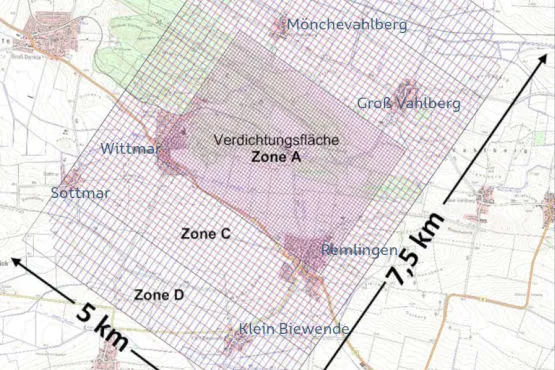
The survey area was around 37.5 square kilometres in size and encompassed the localities of Wittmar, Remlingen, Groß Vahlberg, Mönchevahlberg, Weferlingen and Klein Biewende, as well as parts of Dettum and Sottmar. © GeoBasis-DE/BKG2018 with additions by the BGE
Info Asse
Please don’t hesitate to contact the staff at the Asse information centre if you have any questions. If necessary, they will also put you in touch with their relevant specialist colleagues.
If you would like to see what the Asse II mine is like for yourself, we would be delighted to take you on a tour. Please contact the Asse information centre for further information.

